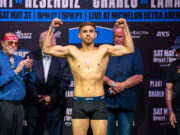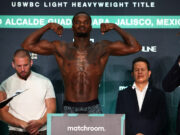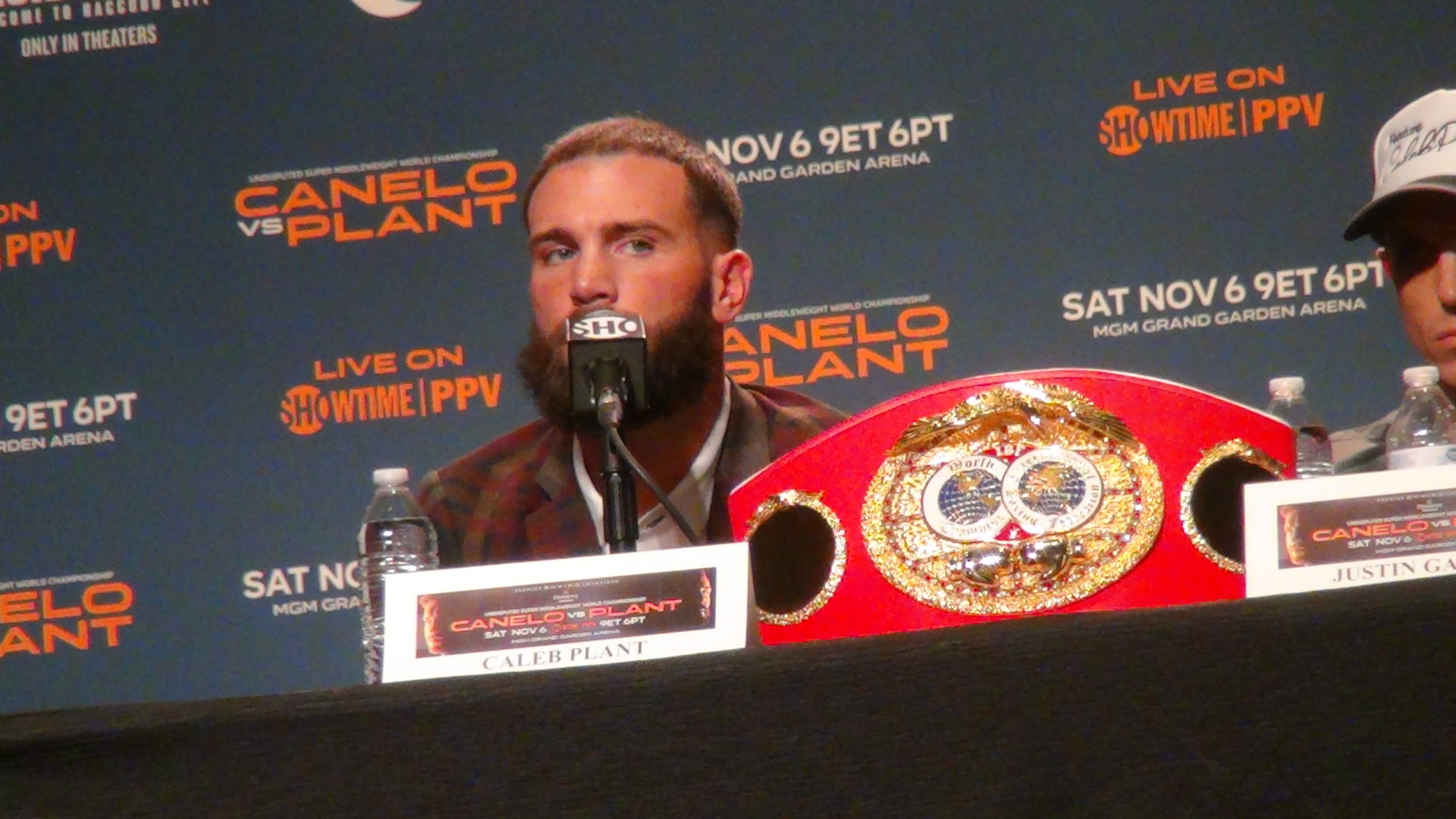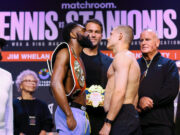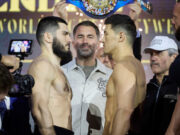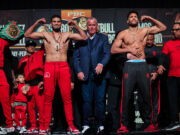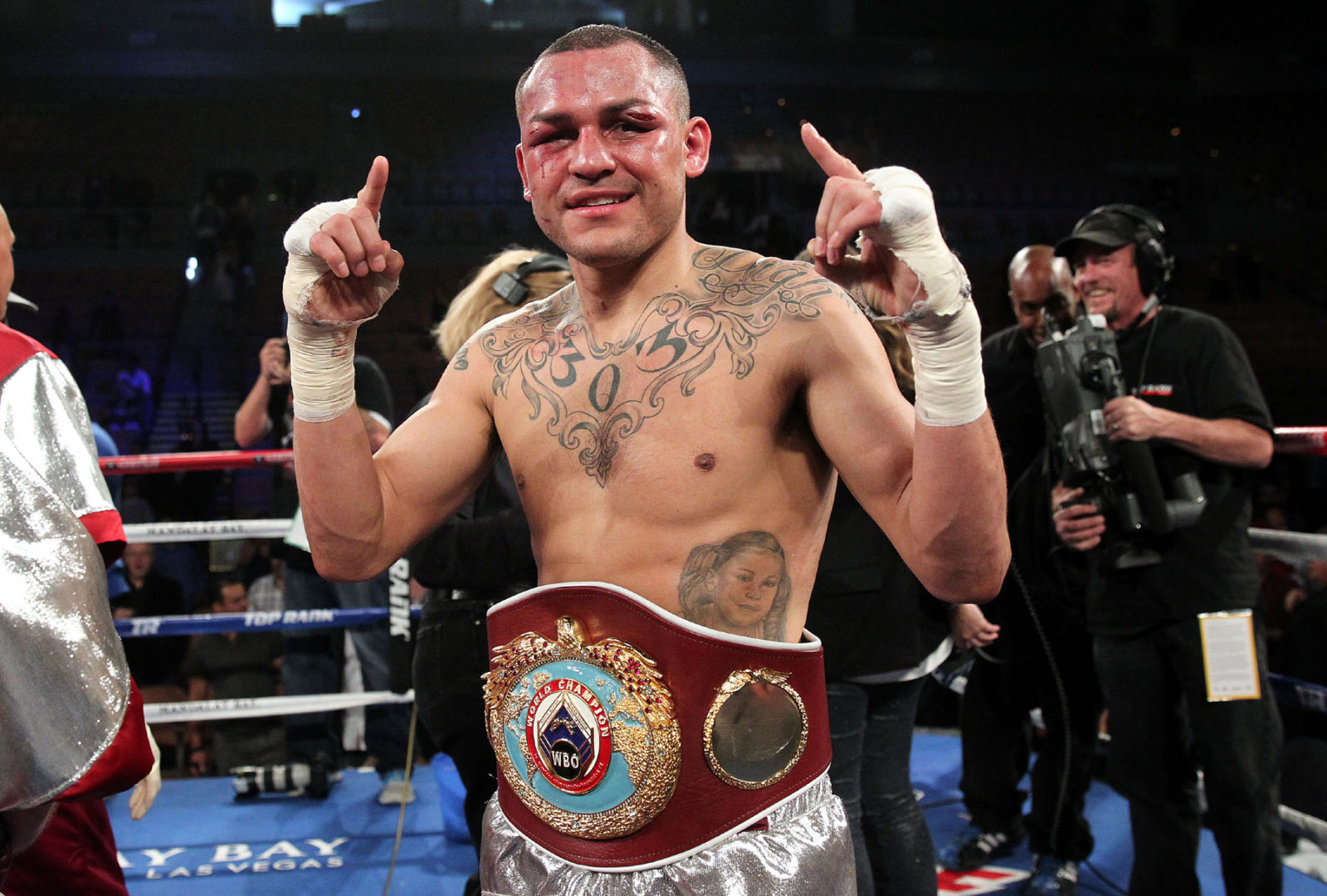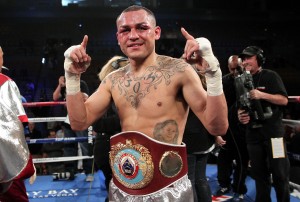
Shortly after prevailing by an unlikely decision in his rematch with California’s Brandon Rios, Colorado’s “Mile High” Mike Alvarado told Rios, a man in the throes of a disorderly, hyperactive, inattentive reaction to his career’s first loss, their third match, a rubber match clumsily promised already by one insatiable bit player, must happen in Alvarado’s hometown – since their first match was made in Rios’ homestate and their rematch was made on a neutral field in Las Vegas. Rios concurred because it is an excellent idea.
Ideas, in the form of pattern adjustments and round-robbing, were in abundance from Alvarado, Saturday, as he decisioned Brandon Rios by unanimous scores of 115-113, 115-113 and 114-113 at Mandalay Bay. My scorecard concurred, 115-114, marking rounds 1, 3, 4, 8, 10 and 12 for Alvarado, rounds 6 and 9 even, and rounds 2, 5, 7 and 11 for Rios – with round 2 going 10-8 in the Californian’s favor.
Mike Alvarado is a better athlete than Brandon Rios, which is not to imply Rios is not a good athlete, because one does not go fractionally far as Rios has in professional athletics without athleticism aplenty. But Alvarado is an especially good athlete: a person who understands the grammar of body movement, where one places a conjunctive foot to move an adverbial shoulder while revising the sentences of another man’s body.
Alvarado was able to make Rios look, at times, formulaic. Rios had an algorithm of maneuvers to apply, and when his IF statement did not yield an expected result he looped through it again, hoping to execute his THEN, having written no ELSE. In round 2, the punch Rios did not expect to flatten Alvarado, his jab – “¡Mucho pinche jab!” as Robert Garcia would succinctly beseech – set Alvarado on drunken pins. The moment held all the cancelled anticipation anticipated by what holes lightened Alvarado’s face and neck: This was a cashout affair because Alvarado was not nearly recovered from their first match, and finance alone returned him to a ring with Rios so near his last undoing.
But in less than a round, Alvarado struck Rios with a force that very much surprised Rios, who registered and moved with Alvarado’s right fist, before catching it in such a ripe spot that instantly nothing behaved below his waist as it should. While Rios grins reflexively and widely at pain – a valuable tick at the championship level, where contests can swing on the discouragement wrought in another man by imperviousness to his assault – there was no grin goofy or inappropriate enough to cover what Rios’ locked-picked-locked-picked knees showed Alvarado and the judges. Those knees told Alvarado he possessed the power to delay Rios for instants enough to prevent the suffocating, drowning feeling Rios’ pressure requires to succeed.
What Alvarado did with those instants makes him a better athlete, though not a better fighter, than Brandon Rios. Alvarado found space between the moments, and in that space he made creative physical choices greater than Rios’. He threw punches at varying speeds and levels of force, knowing Rios would parry a gradually uncoiling left with the same exertion he showed a fully committed right. Therein lay the adjustment no one believed Alvarado had time, discipline or cunning to complete: He kept his left hand much higher than he’d done in October, and he replied to Rios’ right with a right of his own.
Alvarado’s strategy posited two things about the righthand Rios used to ice him in their first match: One, if Alvarado could take even 30 percent off it, whether through compromised trajectory or partial deflection, he could withstand its impact; and two, the instant after Rios felt the knuckles of his right fist sink in Alvarado was the moment he was least careful about returning his head to safety. Alvarado absorbed Rios’ right then matched it right back, and he did it from the opening round. If Alvarado was no longer macho enough to trade uncovered righthands with Rios, no longer anxious to play naked lumberjack at the “Bam Bam” tree, he graduated from training camp convinced a lightweight titlist in his second career match at 140 pounds, whatever his Cro-Magnon reputation, could not play sponge to 40 or so such punches in a half hour.
Alvarado was right and Rios relented enough, which is to say barely. Once Rios considered braking –evident each time Alvarado skipped at Rios with a bowled uppercut Rios blocked every time but did not charge through – Alvarado was able to practice accomplished salesmanship, fleeing Rios for the opening 150 seconds of rounds 9 and 10, before landing punches enough to convince all three judges Alvarado took those decisively important scoring rounds, rounds Rios will return to, on tape and in memory, when he makes a case to himself Alvarado did not win their rematch. There was this irony in Rios’ reaction to those late, round, and late-round, punches from Alvarado: Rios’ greatest defensive strength, an incredible plasticity born of fantastic composure, caused his pliant neck to let its top snack backwards, crediting Alvarado’s clean shots with more force than they merited.
Still, the fight was very close, and while none of the three cards was wrong, Duane Ford’s tally, 114-113, was probably rightest of all.
Remember when Top Rank’s rematch between Miguel Cotto and Antonio Margarito was jeopardized for Madison Square Garden by Margarito’s blindness? The venue that topped the promoter’s list of replacements – or was rumored to replace it before Cotto’s understandable reticence made Bob Arum disconnect his own conference call – was Denver’s Pepsi Center. Denver has long boasted one of boxing’s beloved matchmakers, Don Smith, and now boasts one of its beloved fighters, Mike Alvarado. Pepsi Center for Alvarado-Rios III is a lovely idea.
***
Author’s note: This column will take next week off, returning April 15.
Bart Barry can be reached at bart.barrys.email (at) gmail.com



